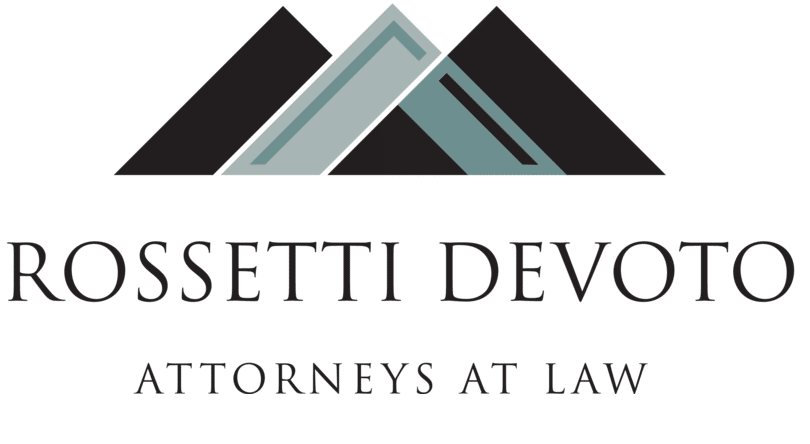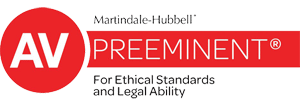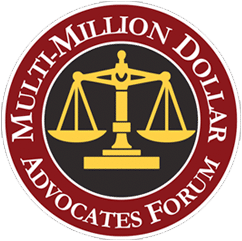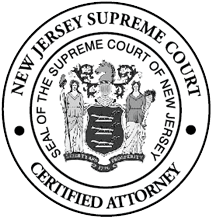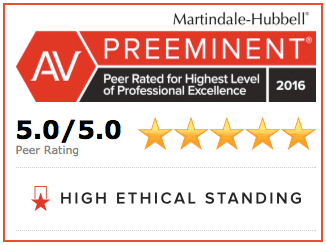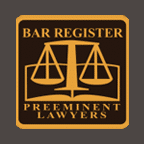Knowing and Preparing for New Jersey’s Successor Liability
Products Liability: Knowing & Preparing for NJ’s Successor Liability
By: Andrew J. Rossetti, Esq.
What is Exactly Successor Liability?
Your company is looking to purchase another entity’s assets. Your in-house counsel has overlooked the purchase agreement and made sure it incorporated the general rule of successor liability: a company acquiring all of a seller’s assets shall not be liable for that seller’s debts and liabilities, including those arising out of tortuous conduct. You feel like you covered all of your bases, but are you really clear of all successor liabilities? The answer is NO…well, at least not in New Jersey.
Courts have generally recognized four exceptions that warrant the imposition of successor liability: (1) where the purchasing corporation expressly or impliedly agreed to assume such debts and liabilities; (2) the transaction amounts to a consolidation or merger of the seller and purchaser; (3) the purchasing corporation is merely a continuation of the selling corporation; or (4) the transaction is entered into fraudulently in order to escape responsibility for such debts and liabilities. [1]New Jersey has added to this list.
Origination of the Product-Line Exception and Connection to Successor Liability
The New Jersey Supreme Court adopted the “product-line exception” to successor liability. In fact, the concept originated in 1977 from the California Supreme Court in Ray v. Alad Corp. In Ray, the plaintiff got an injury in a fall from a defective ladder. One year prior to the injury, the manufacturer of the ladder dissolved and sold its assets, stock in trade, trade name and goodwill. Furthermore, the purchasing entity continued to manufacture the same line of ladders as the selling corporation.
Moreover, they used the same name, equipment, employees and customer lists. [2] So, the California Supreme Court concluded that “a party which acquires a manufacturing business and continues the output of its line of products…assumes strict tort liability for defects in units of the same product line previously manufactured and distributed by the entity from which the business was acquired.” [3] And just like that, the product-line exception to successor liability was born.
In fact, the Ray court gave a three-part justification for imposition of potential liability upon a successor corporation that acquired the assets and continued the manufacturing operation of the predecessor: “(1) The virtual destruction of the plaintiff’s remedies against the original manufacture caused by the successor’s acquisition of the business, (2) the successor’s ability to assume the original manufacturer’s risk-spreading role, and (3) the fairness of requiring the successor to assume a responsibility for defective products that was a burden necessarily attached to the original manufacturer’s good will be enjoyed by the successor in the continued operation of the business.” [4]
Currently, California, Washington, New Mexico, Pennsylvania, Mississippi and of course, New Jersey have adopted or referred favorably to the product-line exception. [5]
New Jersey’s Establishment of the Product-Line Exception
In 1981, the New Jersey Supreme Court officially adopted the product-line exception in the seminal case Ramirez v. Amsted Indus., Inc. In Ramirez, the plaintiff suffered an injury while operating an allegedly defective power press. From a purchase agreement years earlier, the defendant acquired the selling corporation’s trade name, physical plant, manufacturing equipment, inventory, manufacturing designs, patents and customer lists. [6]
The Court formulated a rule and stated that “where one corporation acquires all or substantially all the manufacturing assets of another corporation, even if exclusively for cash, and undertakes essentially the same manufacturing operation as the selling corporation, the purchasing corporation is strictly liable for injuries caused by defects in units of the same product line, even if previously manufactured and distributed by the selling corporation.” [7]
Moreover, the Supreme Court reasoned that by acquiring the selling corporation’s trade name, plant, employees, manufacturing equipment, designs and customer lists, and by holding itself out to potential customers as the manufacturer of the same line of the selling corporation’s products, the selling corporation benefitted substantially from the legitimate exploitation of the accumulated good will earned by the selling corporation’s product line. [8]
The Exact Product Line?
So what constitutes the same product line? Although Ramirez makes this a requirement, our court system has not laid out a specific definition. Fortunately, there has been some guidance on the issue from Bussell v. DeWalt Products Corp.. In Bussell, a saw manufactured by DeWalt amputated the plaintiff’s thumb and three fingers. Years earlier, Black & Decker purchased DeWalt’s saw manufacturing assets.
Defendant argued that the saw in question was not the same product line because it was upgraded over the years and was not the same exact product as the DeWalt saw. However, the Court found that it was unimportant that the saw manufactured by Black & Decker was updated with technological advances and thus was not the exact same one manufactured by DeWalt. Moreover, the Court stated that the successor must undertake essentially the same manufacturing operation; the operation need not be identical. [9]Therefore, the word “same” does not necessarily mean exact.
Product-Line Exception in a Bankruptcy Sale
The New Jersey Supreme Court in Lefever v. K.P. Hovnanian Enter., Inc. revisited the product-line exception. The case involved an asset sale under a Bankruptcy Section 363 Order. In Lefever, a forklift operator who was injured, brought an action under the product line exception against the manufacturer’s successor that acquired the product line owner’s assets at bankruptcy sale.Among other things, these assets included the engineering data, dealers, inventory, work in process, accounts receivable, plant and manufacturing equipment. [10]The purchasing corporation also benefited from claiming that the predecessor’s founder was the founder of their company and that their product quality and leadership role in the forklift industry never changed. They also claimed to have the same personnel and same dealers with a “continuity of enterprise.” [11]
The Lefever court followed the product line exception from Ramirez and held for the plaintiff, reasoning that recourse is justified when a successor corporation enjoys the trade name, good will and continuation of an established manufacturing enterprise. Moreover, the Court stated: “Ready access to counseling…enabled [the purchasing corporation] to structure the acquisition to avoid or accept successor liability. However, it should not seek to have it both ways—trading on the good will generated by a long-standing customer base, yet disavowing responsibility to those same customers.” [12] Therefore, unless a bankruptcy court has “dealt with” the claim, the product line exception applies. [13]
Preventative Steps Buyers Can Take when It Comes to Successor Liability
Beginning with your purchase agreement, make sure it is clear, unambiguous and expressly states that the purchaser will not assume any of the seller’s debts or liabilities. An additional indemnity clause should also be included. Next, before finalizing any type of asset purchase agreement, a potential buyer should analyze the potential sources of liabilities. Then, complete an investigation entailing a thorough review of the industry the seller is involved in. Identify any product or practice that may give rise to post-sale liability. Certain industries will involve products that come with higher occurrences of claims; you must account for this.Once you are fully informed of this information, you will have the ability to discuss perhaps the most important step, insurance.
Still, potential buyers should make sure that they maintain insurance that covers the pre-sale conduct and products of the selling company. In fact, one way this can be done is to negotiate for the selling corporation to maintain their corporate existence post-closing and retain an additional post-closing insurance policy. Furthermore, a selling corporation can also fund and set aside a future occurrences account for any future liability claims. Additionally, these terms will have to be negotiated between the selling and purchasing corporation. In fact, any discrepancy can be solved by adjusting the purchasing price of the entity’s assets. However, if you are a purchasing company, it would definitely be beneficial for you to pay a little more and not be subject to successor liability for past products.
To Conclude
Lastly, remember Ramirez! In New Jersey, if you purchase substantially all of the manufacturing assets of a company and undertake essentially the same manufacturing operation as the selling corporation, you are strictly liable for injuries caused by defects in units of the same product line, even if the former company manufactured them. Take this legal rule into account if you are going to continue to produce the same (not exact) product line of the selling corporation and do not forget to negotiate the future liability in the purchase agreement.
Andrew Rossetti is a plaintiff’s personal injury attorney and partner at Rossetti & DeVoto, PC, in Cherry Hill, New Jersey.
References
[1] Ramirez v. Amsted Indus., Inc., 86 N.J. 332, 340-41 (1981)
[2] Ray v. Alad Corp., 19 Cal.3d 22, 560 P.2d 3, 136 Cal.Rptr. 574 (1977)
[3] Ray v. Alad Corp., 19 Cal.3d at 29, 560 P.2d at 7, 136 Cal.Rptr. at 578.
[4] Ray v. Alad Corp., 19 Cal.3d at 31, 560 P.2d at 9, 136 Cal.Rptr. at 580.
[5] Martin v. Abbott Labs., 689 P.2d 368 (Wash. 1984); Dawejko v. Jorgensen Steel Co., 434 A.2d 106 (Pa.Super. 1981); Ramirez v. Amsted Indus. Inc., 431 A.2d 811 (N.J. 1981); Garcia v. Coe Mfg. Co., 933 P.2d 243 (N.M. 1997); Huff v. Shopsmith Inc., 786 So.2d 383 (Miss. 2001) (agreeing with the exception in dicta).
[6] Ramirez v. Amsted Indus., Inc., 86 N.J. 332, at 335, 352 (1981)
[7] Ramirez v. Amsted Indus., Inc., 86 N.J. 332, 358 (1981)
[8] Ramirez v. Amsted Indus., Inc., 86 N.J. 332, 352 (1981)
[9] Bussell v. DeWalt Products Corp., 259 N.J. Super. 499, 518 (App. Div. 1992)
[10] Lefever v. Lull Indus., Inc., 311 N.J. Super. 1, 3-4 (App. Div. 1998) aff’d sub nom. Lefever v. K.P. Hovnanian Enter., Inc., 160 N.J. 307 (1999)
[11] Lefever v. K.P. Hovnanian Enter., Inc., 160 N.J. 307, 326 (1999)
[12] Lefever v. K.P. Hovnanian Enter., Inc., 160 N.J. 307, 327 (1999)
[13] Lefever v. K.P. Honanian Enter., Inc., 160 N.J. 307, 316 (1999)
